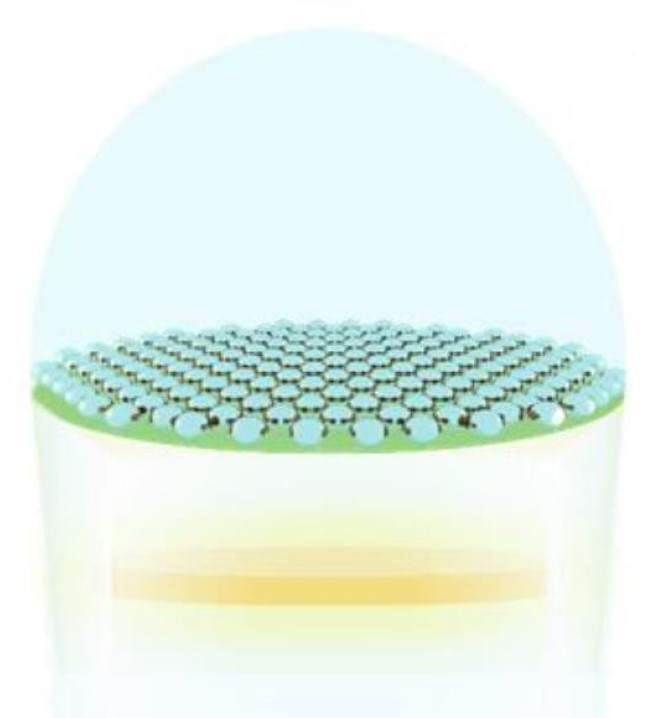Aug 10 2020
While designing light-emitting diodes (LEDs), the addition of a layer of nanoparticles could enable them to generate more light using the same amount of energy, and also enhance their lifetime.
 Illustration of the nanoparticle layer within the LED casing. Image Credit: Imperial College London.
Illustration of the nanoparticle layer within the LED casing. Image Credit: Imperial College London.
This is the finding reported by a research group from Imperial College London and the Indian Institute of Technology (IIT) Guwahati. The group has discovered a new method to increase the amount of light produced by LEDs. The researchers have described their innovation in the Light: Science & Applications journal.
If LED light sources are made more durable and efficient, they tend to consume less energy, decreasing the environmental effect of their electricity use.
LEDs find use in an extensive range of applications, spanning from smartphones, traffic lights, large outdoor screens, backlighting for electronic displays, and general decorative lighting, to decontamination of infected surfaces, sensing, and water purification.
The research group modeled the effect of positioning a two-dimensional (single) layer of nanoparticles between the LED chip, which generates the light, and the transparent casing that safeguards the chip. The casing is essential but it can produce undesirable reflections of the light emitted from the LED chip, indicating that not all the light escapes.
The researchers identified that such reflections could be reduced by adding a layer of finely tuned nanoparticles, enabling up to 20% more light to be emitted. The reflections raise the heat within the device, corrupting the LED chip faster. Therefore, a decrease in the reflections could also minimize the heat and enhance the lifetime of LED chips.
Global Impact
While improvements to the casing have been suggested previously, most make the LED bulkier or more difficult to manufacture, diminishing the economic effect of the improvement.
Dr Debabrata Sikdar, Study Co-Author, from IIT Guwahati and a former European Commission Marie Curie-Sklodowska Fellow, Imperial College London
Sikdar added, “We think that our innovation, based on fundamental theory and the detailed, balanced optimization analysis we performed, could be introduced into existing manufacturing processes with little disruption or added bulk. We think that our innovation would make LEDs brighter, more energy-efficient, and durable.”
According to study co-author Professor Sir John Pendry, from the Department of Physics at Imperial, “The simplicity of the proposed scheme and the clear physics underpinning it should make it robust and, hopefully, easily adaptable to the existing LED manufacturing process.”
It is obvious that with larger light extraction efficiency, LEDs will provide greater energy savings as well as longer lifetime of the devices. This will definitely have a global impact on the versatile LED-based applications and their multi-billion-dollar market worldwide.
Sir John Pendry, Professor, Department of Physics, Imperial College London
From Theory to Practice
The predicted effect is a result of development of a systematic theory of various photonic effects related to nanoparticle arrays at interfaces, applied and experimentally tested in the context of earlier reported switchable mirror-windows, tuneable-colour mirrors, and optical filters.
Alexei Kornyshev, Study Co-Author and Professor, Department of Chemistry, Imperial College London
The study’s next stage will be to develop a prototype LED device with a nanoparticle layer, testing the ideal configurations proposed by the theory—such as the shape, size, material, and spacing of the nanoparticles, and how far the layer should be positioned from the LED chip.
According to the researchers, the principles employed can work together with other current schemes executed for improving LED light extraction efficiency. Also, a similar scheme could be applicable to other optical devices where the transmission of light across interfaces tends to be critical, for example, in solar cells.
Journal Reference
Sikdar, D., et al. (2020) Nanoparticle meta-grid for enhanced light extraction from light-emitting devices. Light: Science & Applications. doi.org/10.1038/s41377-020-00357-w.
Source: https://www.imperial.ac.uk/